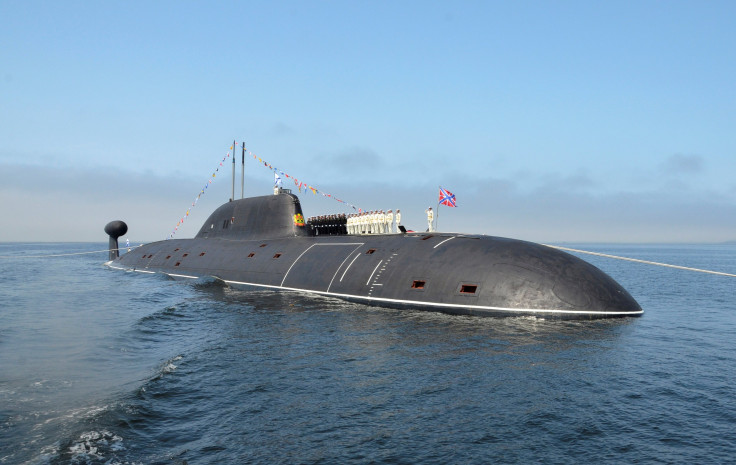Russia Is Producing 30 Nuclear-Armed Torpedoes That Could Evade Detection, Decimate Entire Cities

KEY POINTS
- Russia reportedly produced the first batch of Poseidon nuclear-armed torpedoes earlier this year
- A Poseidon torpedo can carry a nuclear warhead with a yield of up to 100 megatons, according to reports
- Experts warned Poseidon could generate a killer shockwave and gigantic tidal waves
Russia is building long-range, nuclear-armed torpedoes, causing alarm among atomic scientists and weapons experts.
Earlier this year, Russian state-run news agency TASS reported that Russia had successfully produced the first batch of nuclear-powered torpedoes dubbed "Poseidon." This is part of the Russian Navy's reported plan to purchase more than 30 Poseidon torpedoes and place them on combat duty by deploying them on four submarines.
The new Russian torpedoes are believed to be capable of traveling up to 185 kilometers per hour (115 miles per hour), have a range of approximately 10,000 kilometers (6,214 miles), and operate at depths of up to 1,000 meters (3,280 feet), according to a report by the Bulletin of the Atomic Scientists (BAS).
The strategic nuclear-capable underwater drones are designed to evade detection by acoustic tracking devices and other traps, BAS said.
The report also revealed that Poseidon could be equipped with a nuclear warhead with a likely yield of at least several megatons and up to 100 megatons, making it roughly twice as powerful as the Soviet device Tsar Bomba, the most powerful nuclear weapon ever detonated.
In March, Professor Andrew Futter, an academic and nuclear weapons expert at the University of Leicester in England, told the Daily Mail that Poseidon's detonation could generate a killer shockwave and gigantic tsunami.
"If a large nuclear device were detonated in or near that Thames estuary, the tide in the Thames could surge towards buildings and millions of people could potentially die in the blast," Futter said, referring to the estuary in which the River Thames meets the sea in southern England.
"The immediate worry wouldn't be about radiation because a huge number of people would [be] killed by the blast, shockwave or burns, first," he added.
Dr. Rod Thornton, a security expert at King's College London, claimed that the Russian nuclear torpedo could destroy cities close to the explosion. He also suggested that if Poseidon was launched into deeper waters, it could generate large tidal waves.
"But the wave, if it swamped London, would kill everyone there. It would wipe out the city," Thorton told the Daily Mail.
"And the same wave might kill everyone in all channel ports in the UK and France - and maybe even as far as Rotterdam," Thorton added.
BAS warned that, unlike the Cuban Missile Crisis in 1962, when a Soviet submarine deputy commander prevented the launch of a nuclear-tipped torpedo, the Poseidon can only be controlled through a "combination of remote communications and onboard automation."
With no human onboard, Poseidon's system is vulnerable to hacking by third parties, technical malfunctions, and environmentally-caused accidents.
However, the group noted that Russia's underwater nuclear weapon is seen by many as "a psychological weapon intended for nuclear signaling rather than for its actual use."
BAS added that Russians could use Poseidon to force the U.S. to renew their ballistic missile defense systems talks.
The atomic scientists urged nuclear-armed countries "to continue engaging in arms control and risk reduction talks" to shed light on the uncertainties brought by modern nuclear weapons.

© Copyright IBTimes 2024. All rights reserved.






















